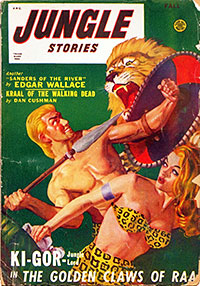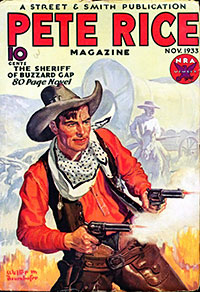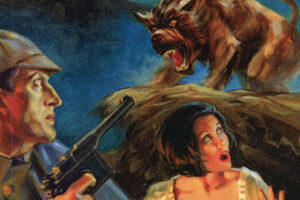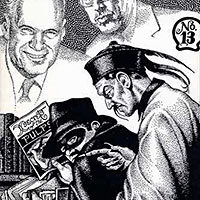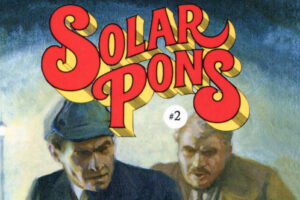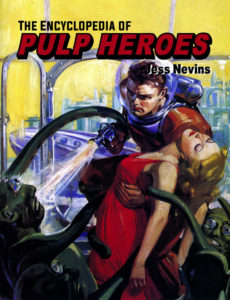 A much needed work, Jess Nevin‘s new The Encyclopedia of Pulp Heroes (2017) is a “sequel” to his Encyclopedia of Fantastic Victoriana (2005). Now, to get his Encyclopedia, you have two choices. Get the whole thing from Amazon for the Kindle, or get four hardbacks from Lulu, with it broken up as Pulp Adventurers, Fantastic Pulp Heroes, Pulp Cowboys, and Pulp Detectives. I have no idea of any plans for paperback editions.
A much needed work, Jess Nevin‘s new The Encyclopedia of Pulp Heroes (2017) is a “sequel” to his Encyclopedia of Fantastic Victoriana (2005). Now, to get his Encyclopedia, you have two choices. Get the whole thing from Amazon for the Kindle, or get four hardbacks from Lulu, with it broken up as Pulp Adventurers, Fantastic Pulp Heroes, Pulp Cowboys, and Pulp Detectives. I have no idea of any plans for paperback editions.
The Encyclopedia is not a “be–all and end–all” work on pulp heroes. It’s great (and important) as a reference on the wide range of characters, and that includes pulp villains (the ones who “starred” in their own series such as Doctor Satan, Black Star, etc., as well as a very few notable foes of certain heroes). But don’t expect an exhaustive look at each character, or a source of story breakdowns. And the definition of “pulp” is pretty broad. Also included are characters outside pulp magazines (from movie serials, comic strips, but not comic books), and foreign “pulp” characters. Nothing that happens with these characters after the pulp period of 1902-45 is noted, so nothing on new works (comics, movies, reprints, new prose, etc.) is included.
To give some examples, the entry for Doc Savage covers about a page and a half. We are told who created the character, but the other authors beyond Lester Dent are not noted. The pulp magazine and first radio show are noted, but the Street & Smith comic book is not, nor the second and third radio shows. We get a run down of his associates, the Fortress of Solitude, Hildago Trading Co., and his New York City headquarters. No listing of all titles.
The entry for The Shadow is a little shorter. The differences between the radio and pulp versions are noted, but nothing about the comic-strip or comic-book versions is include, nor is there any info on the authors other than Walter Gibson. We get a rundown of most of his agents, but some are left out (Miles Crofton, Cliff Marsland, etc.). Rutledge Mann is said to have managed The Shadow’s money, which I don’t think he did. He was an information gatherer, heavily used before Burbank came along.
The longest entry I came across was for Nick Carter, at about four pages. Terence X. O’Leary got about two pages.
I did come across a few errors in some entries I read. I think with a work of this type, such mistakes can happen. The Kindle version clocks in at 52,500+ pages! There is a fairly long bibliography, which I think may be the cause of the errors, as these secondary sources may have had errors that got brought into this work. Having read these works, I caught this errors. Here is what I found:
- The Avenger (the S&S version). Credit is given to (among others) Dent & Gibson for the character’s creation, but as far as I know, they just contributed ideas, which I’m not sure I’d count as being creators. There was an Avenger radio show that had a different character. This one gets its own entry, but it ran from 1945-46, not 1941-46. Gibson is noted as one of the creators of this character, which is news to me.
- The Bat (the Johnston McCulley one) is noted as wearing a bat like outfit. He did not. He wore a sack-cloak hood over his head, with a bat emblem on it.
- Buck Rogers is told to have started in comic strips, overlooking his origin in the pulps first.
- Captain Satan has several points I do not recall from reading the series. We are told he was a criminal who got rich from his crimes, then reformed to go after crooks. And that he pretends to be superhuman and wears his devil symbol on his chest. I don’t believe any of this is true, especially the last.
- Major Lacy (head of Amusement Inc.) is noted to be referred to as “The Black Ace.” I can’t recall that happening in the stories. I also don’t recall one of this lieutenants having been a former enemy.
I’m not sure how many characters may have been overlooked, but did not see Johnston McCulley’s Rollicking Rogue.
Despite my pointing out some of the problems with this work, please don’t mistake that this is an important work that all pulp fans should have. I hope that since many of these characters are getting easier to read by current pulp fans that corrections can be brought up and incorporated into a future edition of this work. Also, here at ThePulp.Net there is The Pulp Wiki. People can add information here on these characters that can also help.
So get this work and start reading!

